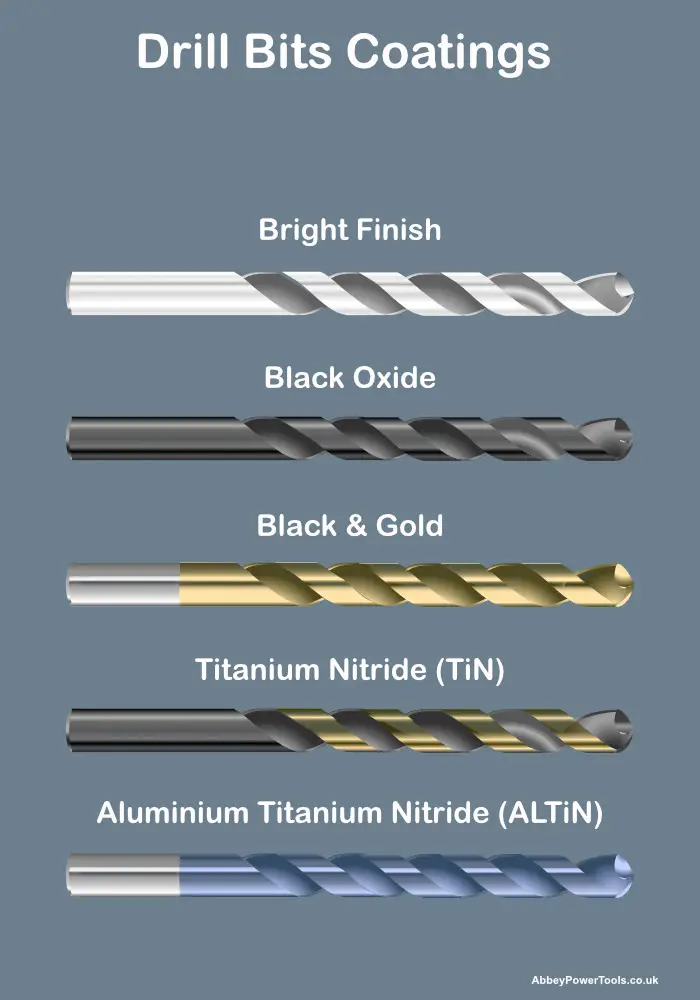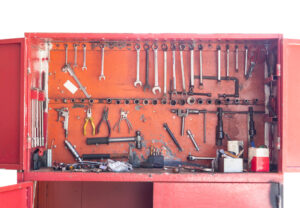Have you ever wondered what colour the drilling bit is used for metal? Well, here’s your answer! In this article, we will be discussing the different colours of bits that are used to drill metal. We’ll tell you which ones work best depending on the material and why.
What colour is a metal drill bit?
Black is the most common colour and also has a good balance of strength, hardness and heat resistance for drilling metal. There are other colours available too such as silver or yellow but these can be more expensive and aren’t used quite so often for drilling metal in comparison with black which is widely used by industry professionals.
Different types of drill bits used in metal and their uses
Coatings extend tool life and improve cutting performance.
We’ve selected a few of the most popular coatings to keep things simple, so let’s jump in.
1 – Bright finish
Uncoated and inexpensive, these drill bits are perfect for drilling into low-carbon steel or aluminium.
2 – Black Oxide
With a black oxide finish, they provide more lubricity to resist oxidation and heat treatment guarantees 50 per cent longer tool life over bright finishes.
3 – Black and Gold
One of the most popular coatings for HSS drills, black oxide offers excellent corrosion resistance and lubricity as well as top-plated with gold. These bits are not prone to chipping or flaking and help field technicians do their job better.
4 – TiN (Titanium Nitrate)
Gold finish. Good entry-level coating for machining. For drilling into low-carbon steel or aluminium, TiN offers a good compromise between price, performance and tool life.
5 – AlTiN (Aluminum Titanium Nitride)
AlTiN is a couple of steps up from TiN, with extended life and performance. AlTiN does not perform well on aluminium since aluminium is part of the coating. Good for use applications where chipping isn’t an issue. Much higher heat tolerance compared to TiN and TiCN.
What is the difference between a metal drill bit and a masonry drill bit?
There is not a big difference between the two drill bits. It’s just that they are made of different materials and have different diameters. Metal drills are used when drilling through metal, while masonry drills can be used to drill through brick or stone.
The cutting tip is often made from tungsten carbide bonded to a spiralled steel shaft. Some masonry drills are described as ‘durium tipped’, this term refers to a highly durable silicon bronze alloy used instead of tungsten as the cutting point. Usually, they have a red tip but not always, so make sure you check before using your drill bit!
A metal drill would be better when drilling through wood or stone and vice versa with a masonry drill. But it’s best for both types if you use them according to what their purpose is meant for.
You may also want to consider that these bits will dull quicker than an average bit due to the material being drilled into (metal versus brick).
The different materials drill bits are made from and which ones are the most popular
Different drill bits are made from different materials. These include HSS, carbide, cobalt, and titanium.
1 – High-Speed Steel
(HSS) is the most popular drill bit material for several reasons.
HSS is also extremely versatile. Manufacturers can configure an HSS drill bit for just about any application you can think of. Readily available and inexpensive.
Good in drill presses and forgiving in a hand-held drill gun Easy to resharpen: If your High-Speed steel bits get dull quickly or if they break easily, you probably don’t know how to use them properly!
2 – M42 Cobalt or HSS with Cobalt Added
M42 Cobalt is high-speed steel with about 8% to 10% cobalt added so that it has the hardness and toughness of HSS, but also with greater resistance to heat.
Same characteristics as a standard HSS drill but due to its higher durability and better heat resistance properties, M42 Cobalt drills are more expensive than regular HSS.
3 – Carbide
Carbide drills are the most expensive in terms of up-front costs but have the best drill-to-hole ratio, which helps you make more holes per length drilled. They can be run much faster (three to five times), decreasing the time needed to produce holes. Carbides provide excellent heat and chip resistance because they’re made out of many extremely small particles that don’t clog when cutting through metal or stone; this is also why carbides last three to four times longer than M42 Cobalt drills, providing a better return on investment if your application requires frequent drilling over long periods of time
In addition, carbides allow for TSC systems as well as Through Spindle Coolant system or TSC. Will outlast M42 Cobalt by at least a factor of 10-20 which has caused the industry to change over from cobalt to carbide even though there are upfront costs and maintenance requirements.
In a nutshell
There are many coatings available for drill bits. This blog post has covered just a few of the options, but it should be enough to give you an idea of what is possible with metal drilling bits. If you’re looking for more information on this subject or need help finding the right coating for your specific application, we recommend that you read our posts about how drills work and the types of drill bit materials used in the industry today. Read also our post about the best drill bits for stainless steel.
- Drill Battery Maintenance: Essential Tips for Cordless Drill Battery Care - February 5, 2024
- Troubleshooting Drill Issues - February 5, 2024
- Quick Drilling Techniques - February 2, 2024











